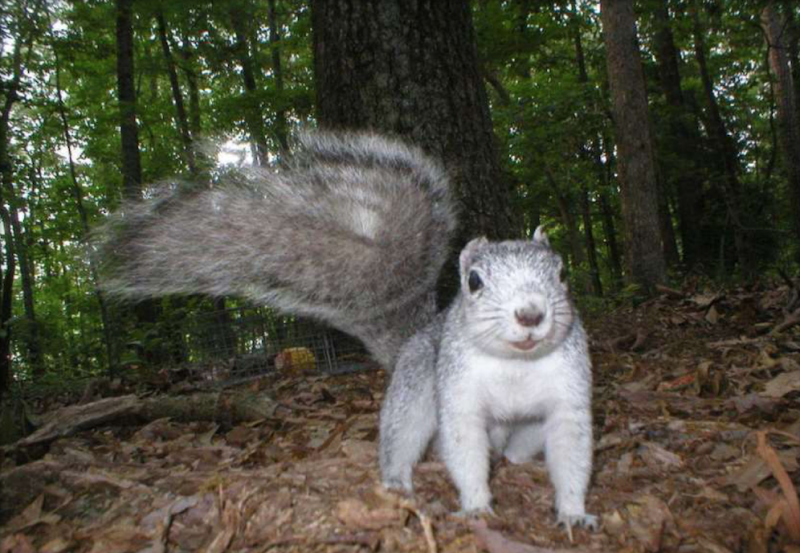The Delmarva fox squirrel, a rare species in Delaware that has recovered in much of its regional range, received another population boost in Delaware with the recent translocation of four squirrels from Maryland as part of continued efforts by the Delaware Department of Natural Resources and Environmental Control, and state and federal partners.
The two male and two female Delmarva fox squirrels were introduced to the Delaware Forest Service’s Headquarters Tract of Redden State Forest.
Part of the Delaware Department of Agriculture, the Delaware Forest Service promotes shared stewardship across agencies by making woodland habitat available to help expand the species’ distribution in Delaware.
Translocations, habitat management and land protection have helped Delmarva fox squirrel populations recover regionally to the extent that the species was removed from the federal endangered species list in 2015. Delmarva fox squirrels are now abundant on the Eastern Shore of Maryland. Still, these large, silver-gray squirrels remain rare in Delaware, with only three established populations known in the state.
Delmarva fox squirrel populations occur in Sussex County, with one group the result of translocations to Assawoman Wildlife Area in fall 2020 and spring 2021, another the result of a translocation to Prime Hook National Wildlife Refuge in the 1980s. A third, naturally occurring population is located at the Nanticoke Wildlife Area and surrounding lands. The squirrels released at Assawoman Wildlife Area this past spring and last fall appear to be thriving, with the DNREC Division of Fish and Wildlife noting at least one female produced young this past summer.
Unlike many of its squirrel relatives, the Delmarva fox squirrel is very slow to expand its range and colonize new territories. In 2014, the Division of Fish and Wildlife developed a Delmarva Fox Squirrel Conservation Plan in collaboration with stakeholders, including representatives from state and federal agencies, Sussex County government, non-governmental conservation organizations, researchers, developers, and local landowners to increase the number of Delmarva fox squirrels in Delaware.
After a feasibility assessment on methods for reintroduction, the plan is now being implemented by translocating squirrels from robust populations in Maryland to unoccupied, suitable habitats in southern Delaware. Additional translocations of at least 15 squirrels to Delaware are planned for spring 2022.
Delaware landowners should not be concerned if they see the Delmarva fox squirrels on their property. Since Delmarva fox squirrels are no longer a federally listed endangered species, program restrictions on habitat impacts are no longer applicable.
However, hunting Delmarva fox squirrels in Delaware is prohibited since they are still a state-listed endangered species, so it is important that hunters note the differences between them and the more commonly seen eastern gray squirrels, for which Delaware has a hunting season.
For photographs comparing and contrasting Delmarva fox squirrels and eastern gray squirrels to lessen chances of mistaken identity between the two species, go to dnrec.delaware.gov under “latest news.”
For more information about Delmarva fox squirrels and the ongoing translocation project for restoring the species in Delaware, go to Outdoor Delaware magazine at de.gov/outdoordelaware to view the “On the Move” article and video.














































